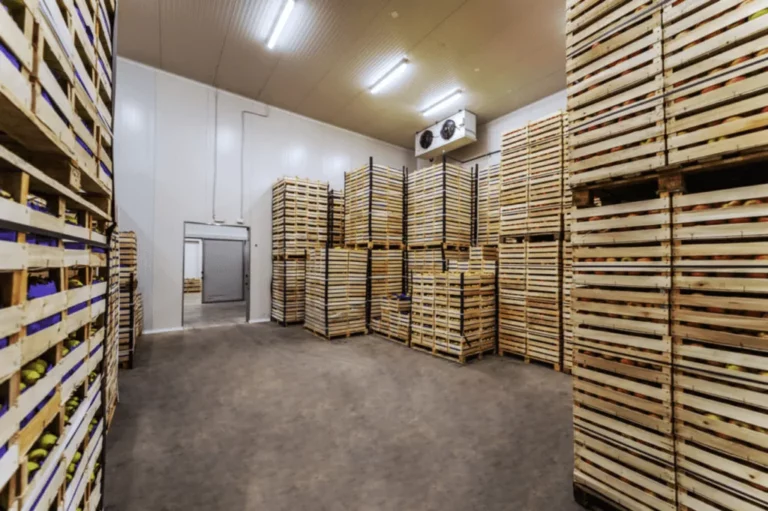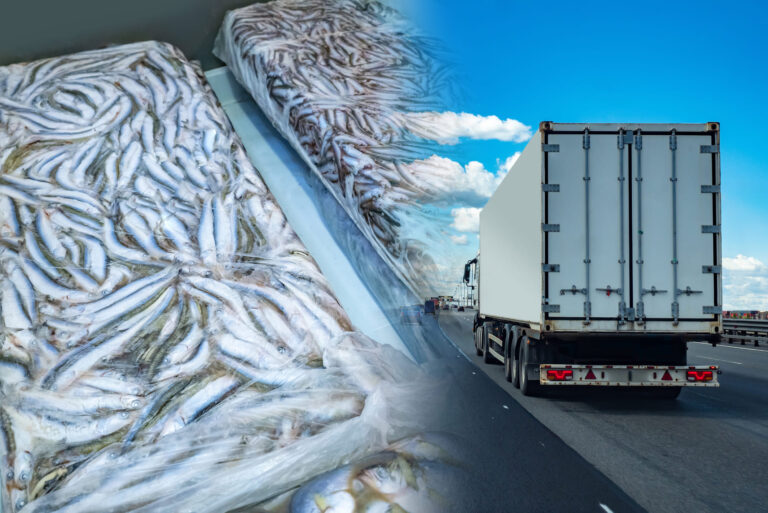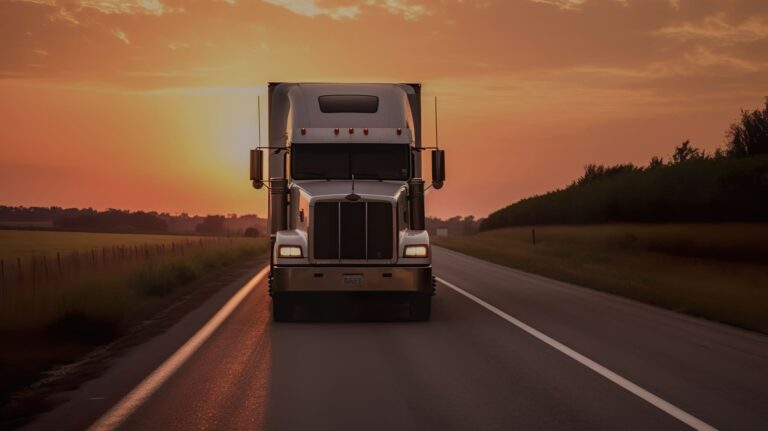Food & Beverage Logistics: Supply Chain, Warehousing & Transportation Guide

Food and beverage logistics covers everything from processing and packaging to shipping and delivery of perishable goods. It is essentially the movement of food products from origin (farm or factory) to consumers. In 2025, this industry fuels a global market worth over $9 trillion, so optimizing the food & beverage supply chain is critical. Key steps include raw material sourcing, processing, warehousing, packaging, and distribution to grocery stores or restaurants. Each step must control temperature, hygiene and timing to keep products fresh. For example, U.S. regulations (like the Sanitary Food Transportation Act) require strict sanitary and temperature controls during road and rail transport.
Key Components of the Food & Beverage Supply Chain
Processing & Packaging: Raw ingredients (produce, meat, dairy, etc.) are processed into consumable products under safety guidelines. After quality checks, food is packaged securely for transit. Proper packaging (insulation, coolants, void-fillers for glass bottles, etc.) is essential to maintain freshness and prevent leaks during shipping.
Transportation: Food logistics relies heavily on trucking (including temperature-controlled “reefer” trucks), as well as ocean, rail, and air for long-haul shipments. The U.S. trucking industry, for instance, handles over 70% of domestic food transport. Logistics providers use multimodal solutions (e.g. refrigerated fleets, tank containers for liquids) to balance cost, speed, and product safety. Dedicated and contract carriage fleets (with drivers trained in food safety) offer consistent capacity, while freight brokerage and LTL/FTL options help manage seasonal spikes and last-mile needs. Technologies like Transportation Management Systems (TMS) and real-time tracking ensure visibility of each shipment’s location and temperature.
Warehousing & Distribution: Warehousing in food logistics ranges from ambient to cold/frozen storage. Expert providers (like OLIMP) offer FDA-approved, temperature-controlled warehousing for all food & beverage products. Just-in-time (JIT) and cold chain warehousing (e.g. beverage bottling areas) preserve shelf life. Cross-docking and consolidation services speed transit – multiple small loads are combined into full truckloads to maximize freshness and reduce costs. Advanced facilities may also provide co-packing, co-manufacturing, and pick-and-pack to streamline operations. In North America, large networks of 3PL warehouses and consolidation centers ensure coverage from coast to coast.
Temperature Control (Cold Chain) Solutions
Perishables demand strict temperature control throughout the “cold chain.” The global cold chain logistics market is booming, projected to reach $500 billion by 2030 due to e-commerce and fresh food demand. Investment in refrigerated trucks, automated cold storage, and IoT sensors is key. For example, North America leads in cold chain investment thanks to its large market and tech adoption. Best practices include continuous temperature monitoring, regular climate checks (during loading and transit), and using thermal packaging or gel coolants to maintain setpoints. Even beverages like wine or soda require temperature checks to prevent spoilage or container failure. Industry leaders specialize in multi-temperature logistics: they offer ambient, chilled, and frozen transport and storage to handle everything from fresh produce to frozen meals.
Warehousing and Distribution Strategies
Efficient food and beverage warehousing keeps product quality high and costs low. Key strategies include:
- Cold & Food-Grade Storage: Use specialized warehouses for frozen, refrigerated, and dry food storage. FDA-approved cold storage facilities are essential for food & beverage products. Strategic placement near ports and distribution centers enables faster turnover.
- Cross-Docking: Transfer incoming shipments directly to outgoing trucks with minimal storage. Many providers offer 24/7 cross-docking to speed up throughput and cut inventory carrying costs.
- Inventory Management: Maintain buffer stocks based on shelf life. Frozen products may stock ~30 days of inventory, whereas fresh produce might only hold 48 hours of supply to avoid waste. Effective systems track stock levels and demand, enabling fast replenishment.
- Beverage Warehousing: Bottled and canned products (beer, soda, wine, etc.) benefit from specialized warehousing solutions. Just-in-time delivery models minimize space use and waste while ensuring rapid restocking and inspection, which is critical for beverage freshness.
Transportation & Freight Shipping
Reliable food and beverage transportation is mission-critical. Providers typically offer:
- Dedicated/Fleet Solutions: Dedicated fleets and contract carriage ensure consistent, temperature-controlled transport. This approach is ideal for large shippers such as food processors and bottlers who need guaranteed capacity and specialized trailers.
- Freight Brokerage & Truckload: Flexible trucking (FTL/LTL) covers seasonal peaks or specialized lanes (e.g. produce from farms, goods to retailers). Multi-stop retail deliveries (direct store delivery) are also managed through these networks, with drivers trained in safe handling and compliance.
- Intermodal Shipping: Bulk liquid foods (such as syrups and oils) often move in ISO tank containers via ship or rail. Intermodal shipping provides food-grade cleanliness, efficiency, and temperature control across multiple modes of transportation.
- Reverse Logistics: Efficient management of returnable containers (e.g. milk crates, beer kegs) improves sustainability. Tracking systems help reduce losses and waste by monitoring reusable bins and packaging.
All shipments are tracked in real time. Advanced transportation management systems (TMS) and sensor platforms give food companies visibility and control, allowing them to predict delays or temperature excursions and take corrective action immediately..
Best Practices & Challenges
Food logistics is time- and quality-sensitive. Common recommendations include:
- Plan and Secure Capacity: Perishables spike during holidays and promotions. Shippers should lock in refrigerated capacity well in advance to avoid seasonal shortages.
- Prevent Spoilage: Ensure on-time delivery to keep products fresh. Refrigerated fleets consume more fuel, so budget extra time and cost for climate control. Schedule periodic temperature checks en route (at loading, during transit, at checkpoints) to verify stability.
- Comply with Regulations: Adhere to FDA’s Food Safety Modernization Act (FSMA) and USDA rules. This includes maintaining sanitary conditions and keeping detailed records. Facilities often hold certifications like SQF or HACCP to prove they meet high safety standards.
- Optimize Packaging: Use insulated or refrigerated packaging when needed. For fragile items (glass bottles), use cushioning void-fillers to absorb shocks. Label packages with handling instructions (e.g. “keep upright”, “refrigerate upon arrival”).
- Communicate with Receivers: Coordinate precise delivery windows. Many retailers and restaurants only accept deliveries at specific times. Stay in touch (via your TMS or ERP) to adjust schedules in case of delays.
By following these practices, food companies reduce waste and ensure customer satisfaction. Maintaining freshness is about speed and visibility, you need dependable, rapid transportation to get fresh foods to their destination… so consumers can enjoy them in their freshest form.
Market Trends, Technology, and Sustainability in Food Logistics
The global food logistics market is booming. It was valued at over USD 120–140 billion in 2024, and forecasts see it roughly doubling by the early 2030s. Growth is driven by rising consumer demand for fresh, convenient foods and the expansion of online grocery sales. Perishable food (meat, dairy, produce) now represents a large portion of the volume: advanced cold chain solutions are expanding accordingly. In fact, emerging markets are investing heavily in infrastructure and technology to meet food safety requirements and e-commerce demand.
North America currently dominates (about 43% of the market) with a well-developed transportation network and strict food safety rules. The region’s perishable logistics sector contributes an estimated $187 billion to the economy (supporting millions of jobs), and its providers are at the forefront of innovation. In the United States, the trend of online grocery shopping has intensified the need for reliable, refrigerated supply chains, leading companies to add cold storage and real-time tracking.
Technology continues to reshape the industry. Supply chain digitization (IoT, blockchain, AI) is increasing efficiency and transparency. For example, IoT sensors in transport help predict and prevent spoilage, while AI forecasts demand surges or route delays. Sustainability is also front-of-mind: regulatory and consumer pressure is pushing logistics to lower waste and carbon footprints. As one analyst notes, the sector is focusing on “cutting-edge information technology such as blockchain, big data… to minimize logistic costs and carbon emissions”.
In summary, current trends show rapid growth of the food logistics market, fueled by e-commerce (Grocery and food delivery), globalization of food trade, and consumer demand for fresh foods. The COVID-19 pandemic and other disruptions have underscored the need for resilient, flexible food supply chains. Going forward, we can expect even greater investment in cold chain capacity, data-driven logistics platforms, and integrated 3PL partnerships.
Working with Specialized 3PL Providers
Given the complexity of food logistics, many manufacturers and retailers partner with expert 3PL providers. Food logistics companies today tend to be full-service: a recent survey of top providers showed that 85% offer refrigerated trucking and around 80% provide cold storage warehousing. They also typically operate national networks, for example, leading 3PLs now report having millions of cubic feet of temperature-controlled storage across dozens of facilities.
When choosing a logistics partner, companies should look for: certified food-grade facilities, robust carrier networks for shipping, and strong technology platforms. Top food logistics providers often invest in systems like WMS/TMS (79% of award-winning companies do so) and have specialized divisions for foodservice, retail consolidation, etc. They may offer additional services like vendor compliance and DSD (direct-store-delivery). Ultimately, a good food logistics partner will tailor solutions to your product mix (fresh vs frozen vs dry), maintain strict quality controls, and provide real-time visibility from factory to shelf.
Conclusion
Effective food and beverage logistics is the “winning recipe” that keeps our grocery shelves and restaurant kitchens stocked with fresh, safe products. It requires meticulous planning, temperature-controlled transport, regulatory compliance and real-time information. By understanding the key supply chain stages, from production and cold storage to delivery, businesses can reduce spoilage and cut costs. Modern solutions (like automation and data analytics) are making these supply chains faster and more reliable. As consumer demand for convenience and freshness grows, companies that partner with specialized 3PLs and invest in best practices will have a competitive edge.
Food manufacturers and distributors should proactively address the unique demands of perishable goods – securing adequate refrigerated capacity, optimizing inventory, and choosing partners experienced in food logistics. With careful management and the right technology, food logistics can ensure customers get the products they want, when they want them, in the safest condition.
You may be interested in

What Is Cold Storage Warehousing? A Guide to Refrigerated & Freezer Warehouses
Cold storage warehouses, also known as refrigerated warehouses or freezer warehouses, are specialized facilities designed to hold perishable goods at controlled temperatures. These heavily insulated warehouses use industrial HVAC and refrigeration systems to keep environments cool or below freezing, extending the shelf life of items ranging from fruits and vegetables to meats, dairy, and sensitive […]

Refrigerated Transportation: Keeping Your Goods Fresh and Safe
In today’s fast-paced supply chain, the demand for refrigerated transportation is higher than ever. Businesses need to move fresh produce, dairy, frozen foods, and pharmaceuticals across long distances while preserving their quality. Refrigerated freight shipping (also known as reefer shipping) provides the solution by using temperature-controlled trucks and containers to keep perishable goods transportation safe […]

Retail Consolidation Services: Save Money & Streamline Your Supply Chain
Retail consolidation groups shipments for the same retailer into a single truckload or shipment, rather than sending multiple smaller LTL loads. By combining orders from multiple suppliers headed to a common retailer, companies dramatically cut costs and simplify compliance. An LTL shipment can be three times more expensive per mile than a consolidated full truckload. […]
Ready to streamline your warehousing needs?
Request a quote today and discover how OLIMP's tailored solutions can optimize your operations